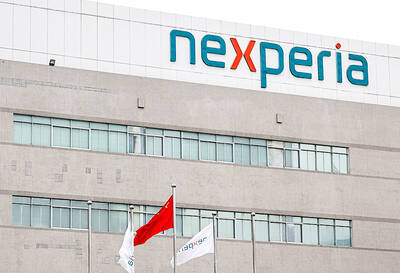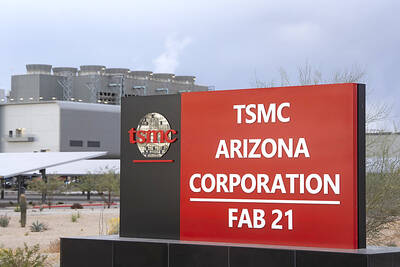US investors are cautious. The Dow Jones Industrial Average and the S&P 500 each repeatedly broke all-time records over the past week, but by Friday, neither had managed to rise as much as 0.4 percent in the five sessions.
Friday ended with the S&P 500 managing a minor surge in the final minutes of trade to eke out a fresh record, up 0.39 percent for the week at 2,039.82.
The Dow Jones Industrial Average added 0.35 percent for the week, ending at 17,634.74, 18 points below its Thursday record.
Meanwhile, the NASDAQ Composite kept up its march to recover from the 2000 dot-com crash that stunned markets. On Friday the heavily tech-oriented gauge finished at 4,688.54, its best level since March 28, 2000.
After a 1.77 percent gain for the week, it nevertheless remained 360 points shy of the all-time high on March 10, 2000. The widespread caution was clear, with shares at high valuations by a number of measures.
“Neither buyers nor sellers are showing much conviction at this juncture ... It is basically a game of chicken right now to see which way the market turns and, importantly, why it turns [if it turns at all],” analysts at Briefing.com said.
“We came so far so fast, it would only be natural to pull back at least a little bit,” Tom Cahill of Ventura Wealth Management said.
“Between now and the end of the year, the markets probably will move sideways a little bit and then move a little higher,” he added.
US shares remained supported by firm earnings growth over the past week, with Walmart’s forecast-beating third-quarter results on Thursday boosting its shares 4.7 percent and propelling the Dow to a new zenith.
For many that was a good sign — along with a rebound in consumer spending last month reported by the US Department of Commerce on Friday and the plunge in gasoline prices — that year-end holiday spending on travel, gifts and restaurants could be strong.
The factors underpinning the gains remain unchanged: the combination of weak economic growth elsewhere and central banks keeping the global markets flush with cheap cash. Those with surplus have few places to put it; bond yields remain ultralow.
Stocks still have not shown the froth of the markets for art and other collectibles, where the mega-wealthy continue to bid up the price of famous pieces to stunning levels.
Earlier this week, a 1925 Patek Philippe watch sold for a record US$21.3 million in a Geneva auction, and in the same city a sapphire known as the Blue Belle of Asia went for an unprecedented US$17.3 million.
In New York, Christie’s sold two iconic Andy Warhol paintings for more than US$151 million, and its main rival, Sotheby’s, auctioned off two Mark Rothko paintings for a combined US$76.5 million.
However, the gains of the newest tech darlings come close.
Shares of Chinese online marketer Alibaba (阿里巴巴) passed US$115 on Friday, up 60 percent since its market debut in September. The price valued it at US$286 billion, more than US$100 billion higher than US online retail king Amazon.
The pre-Christmas shopping season will only begin in earnest in the second half of this month, and that could set the pace of the markets for the rest of the year.
“The economy is growing reasonably well right now,” Cahill said.
“The price of oil continues to go lower, that is good for the consumer. Some analysts believe this could be one of the strongest retail seasons we had in a few years,” he said.

JITTERS: Nexperia has a 20 percent market share for chips powering simpler features such as window controls, and changing supply chains could take years European carmakers are looking into ways to scratch components made with parts from China, spooked by deepening geopolitical spats playing out through chipmaker Nexperia BV and Beijing’s export controls on rare earths. To protect operations from trade ructions, several automakers are pushing major suppliers to find permanent alternatives to Chinese semiconductors, people familiar with the matter said. The industry is considering broader changes to its supply chain to adapt to shifting geopolitics, Europe’s main suppliers lobby CLEPA head Matthias Zink said. “We had some indications already — questions like: ‘How can you supply me without this dependency on China?’” Zink, who also

The number of Taiwanese working in the US rose to a record high of 137,000 last year, driven largely by Taiwan Semiconductor Manufacturing Co’s (TSMC, 台積電) rapid overseas expansion, according to government data released yesterday. A total of 666,000 Taiwanese nationals were employed abroad last year, an increase of 45,000 from 2023 and the highest level since the COVID-19 pandemic, data from the Directorate-General of Budget, Accounting and Statistics (DGBAS) showed. Overseas employment had steadily increased between 2009 and 2019, peaking at 739,000, before plunging to 319,000 in 2021 amid US-China trade tensions, global supply chain shifts, reshoring by Taiwanese companies and

Taiwan Semiconductor Manufacturing Co (TSMC, 台積電) received about NT$147 billion (US$4.71 billion) in subsidies from the US, Japanese, German and Chinese governments over the past two years for its global expansion. Financial data compiled by the world’s largest contract chipmaker showed the company secured NT$4.77 billion in subsidies from the governments in the third quarter, bringing the total for the first three quarters of the year to about NT$71.9 billion. Along with the NT$75.16 billion in financial aid TSMC received last year, the chipmaker obtained NT$147 billion in subsidies in almost two years, the data showed. The subsidies received by its subsidiaries —

At least US$50 million for the freedom of an Emirati sheikh: That is the king’s ransom paid two weeks ago to militants linked to al-Qaeda who are pushing to topple the Malian government and impose Islamic law. Alongside a crippling fuel blockade, the Group for the Support of Islam and Muslims (JNIM) has made kidnapping wealthy foreigners for a ransom a pillar of its strategy of “economic jihad.” Its goal: Oust the junta, which has struggled to contain Mali’s decade-long insurgency since taking power following back-to-back coups in 2020 and 2021, by scaring away investors and paralyzing the west African country’s economy.